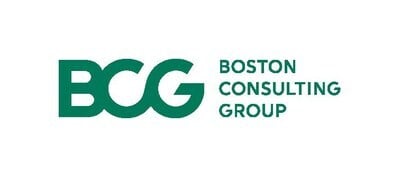- PE 150
- Posts
- SWFs Are Moving On: Can PE Adapt?
SWFs Are Moving On: Can PE Adapt?
This week, we explore the shifting dominance of sovereign wealth funds (SWFs) in global markets, as they move away from private equity partnerships toward direct, long-term investments in infrastructure and technology.
Happy hump day, !
This week, we explore the shifting dominance of sovereign wealth funds (SWFs) in global markets, as they move away from private equity partnerships toward direct, long-term investments in infrastructure and technology.
Private equity is pushing for a bigger role in the $12.5T retirement market, but concerns over fees, liquidity, and transparency keep 401(k) adoption below 1%, sparking debate over potential benefits and fiduciary risks.
Tariff-driven supply chain disruptions are back, as importers rush shipments ahead of proposed tariffs, causing port congestion, rising freight costs, and inflation concerns, while businesses weigh Southeast Asia as an alternative amid potential trade retaliation.
Private equity is reviving its interest in B2C deals, with a 27.8% surge in deal value from 2023 to 2024, driven by resilient consumer demand and digital-first brands, though long-term trends hint at market volatility.
— PE150 Team
Table of Contents

Mega-Funds & Market Influence: The Growing Dominance of SWFs
Sovereign wealth funds (SWFs) once danced in step with private equity (PE), but the last few years have seen the music slow. In 2021, SWF-backed M&A hit a staggering $91.79 billion 80% of which had PE or venture capital fingerprints all over it.
Then came 2022, bringing economic uncertainty and a sharp pivot: PE involvement dropped by nearly half, while direct sovereign deals rose. Fast forward to 2023, and SWF-backed M&A plummeted another 61%, with funds opting for long-term, low-volatility assets over high-risk, high-reward plays.
The $50 trillion question? How will PE adapt as these institutional whales prioritize control, infrastructure, and tech investments over leveraged buyouts? Read the full report for the deep dive.
Premium Perks
Since you are an Executive Subscriber, you get access to all the full length reports our research team makes every week. Interested in learning all the hard data behind the article? If so, this report is just for you.
|

Private Equity’s B2C Comeback? A Rebound in Consumer Deals
After a rough few years, private equity’s appetite for B2C deals is bouncing back. Following a 27.8% surge in deal value from 2023 to 2024, investors are rekindling their interest in consumer-facing businesses.
The long-term picture, however, tells a different story. From 2019 to 2024, B2C deal values declined at a -1.8% CAGR, highlighting the turbulence of the post-pandemic market. The 2021 boom ($568B) proved unsustainable, but 2024’s $337B in deals signals renewed confidence in the sector.
What’s driving the recovery? Resilient consumer demand, digital-first brands, and PE firms hunting for undervalued assets. With momentum picking up, the question is whether this is a sustained rebound—or just another cycle peak.
In partnership with Range
Optimize Your Wealth Like You Optimize Deals.
Most people think wealth management is just about investments.
But why do we only focus on the market while ignoring taxes, equity, estate planning, and cash flow?
Your wealth is more than just your portfolio—it’s your entire financial picture. That’s why Range built a modern, all-in-one platform that helps high-earning households manage everything from investments to tax strategy, real estate, and equity compensation—all for a single flat fee.
After years of working with top executives, self-employed professionals, and investors frustrated with piecemeal solutions, Range developed a smarter way to manage wealth. Their innovative model combines fiduciary advisors with a state-of-the-art platform, delivering seamless, personalized financial guidance that actually fits your life.
And even if you already have a financial planner, you’d be surprised how much Range can optimize your strategy. They take care of the complex moving parts, so you can focus on what really matters—growing and protecting your wealth.
Ready for a smarter approach to wealth management?
Book a complimentary demo today and see how Range helps you unlock the full potential of your money.

401(k)s and PE: A Liquidity Mismatch Waiting to Happen
Private equity wants a bigger slice of the $12.5T workplace retirement pie, but not everyone’s buying in. Despite PE firms managing a growing chunk of corporate America, their presence in 401(k)s remains under 1%—largely due to concerns over fees, liquidity, and transparency.
Trump’s first term cracked the door open for PE in retirement plans, and now Apollo, Blackstone, and KKR are trying to widen the gap with new products. Supporters argue private markets could offer better diversification and returns. Skeptics counter that employees need cash-ready investments—not assets that take years to exit. The real kicker? If plan sponsors keep saying “no,” they might find themselves sued for leaving money on the table. Private equity in 401(k)s: A golden opportunity or a ticking fiduciary time bomb?

Boots: From Retail Giant to PE Bargain Bin
Sycamore Partners just scooped up Walgreens Boots Alliance for $10B—roughly what Walgreens paid for Boots alone a decade ago. The discount reflects a brutal few years for the pharmacy chain, with mounting debt and a consumer shift to online shopping eroding its value.
Walgreens is spinning this as a strategic retreat, with CEO Tim Wentworth saying its turnaround plan needs “time, focus, and change better managed as a private company.”
Now, all eyes are on whether Sycamore will break up Boots and sell it separately. The UK chain has an “unbelievably trusted brand,” but with just 1,900 stores left after a wave of closures, its future is far from certain.
For Walgreens, shedding Boots is part of a broader retreat, with 1,200 US store closures also on deck. As the dust settles, the question is whether Sycamore can revive Boots—or just flip the script and cash out.
In partnership with Range
Optimize Your Wealth Like You Optimize Deals.
Your wealth is more than just your portfolio—it’s your entire financial picture. That’s why Range built a modern, all-in-one platform that helps high-earning households manage everything from investments to tax strategy, real estate, and equity compensation—all for a single flat fee.
Ready for a smarter approach to wealth management?
Book a complimentary demo today and see how Range helps you unlock the full potential of your money.

The Direct Lending Takeover
Private credit fundraising has exploded over the past decade, crossing $216B in 2023—more than double 2013 levels. The main driver? Direct lending.
Once a niche strategy, direct lending—floating-rate loans backed by cash flow rather than collateral—has dominated fundraising, fueled by rising interest rates and banks pulling back from mid-market lending. Business Development Companies (BDCs) are all-in, while mezzanine lending (subordinated debt with equity kicker) and asset-based lending (collateral-backed loans) remain steady players.
Meanwhile, distressed debt funds are circling like vultures, but their share hasn’t surged—yet. With $2.5T+ in AUM globally, private credit now rivals leveraged loans and high-yield bonds. The question is: how much bigger can it get before regulators take a harder look?

Tariff-Induced Tetris: The Supply Chain Shuffle
Remember 2021’s supply-chain nightmares? They're back—this time with a tariff-fueled twist. Importers scrambled to front-load shipments ahead of Trump's proposed 25% blanket tariffs on Canada and Mexico, plus an additional 10% on China. The result? Port congestion, soaring air freight costs, and manufacturing overtime surges.
The inventory hoarding isn't done yet, which should keep freight rates elevated in the near term. But here’s the kicker: while supply-chain stress won’t push inflation higher, the tariffs themselves will, with core inflation now projected to exceed 3% in 2025. Meanwhile, businesses are eyeing Southeast Asia as an alternative, though retaliatory tariffs could quickly close that door.
Bottom line: The "tariff whiplash" effect is real. Net trade is expected to drag GDP down by 2 percentage points in Q1, offset only slightly by inventory stockpiling. Buckle up, because the supply chain rollercoaster isn’t stopping anytime soon.

The 2023 Banking Crisis – A Modern Bank Run
Two years ago, the U.S. banking system faced its biggest stress test since 2008. The collapse of Silicon Valley Bank (SVB) in March 2023 set off a chain reaction, with Signature Bank and First Republic following suit. The cause? A mix of rising interest rates, poor risk management, and social media-fueled panic, leading to historic bank runs.
Despite FDIC interventions and Federal Reserve assurances, the crisis shook investor confidence. Nearly 200 banks were flagged as vulnerable, raising concerns about systemic risks. While some, like JPMorgan Chase, emerged stronger—snapping up First Republic in a $10.6B deal—others faced harsh lessons in liquidity mismanagement.
The fallout? Increased regulatory scrutiny, higher deposit insurance awareness, and a shift in investor strategy. One thing became clear: in the digital age, a bank run can happen faster than ever before.
Love PE150? Stay Ahead in Insurance Too.
Insurance150 delivers the same high-quality insights—proprietary trends, curated info, and actionable tools for Insurance & FIG executives in just 5 minutes a week. Subscribe now


The share of US workers making a direct transition from one employer to another has slid near a four-year low, according to the latest data from the Philadelphia Fed, pointing to a weakening labor market
— Bloomberg Economics (@economics)
8:31 PM • Mar 17, 2025
"To be successful, you must accept all challenges that come your way. You can't just accept the ones you like"
Mike Gafka





